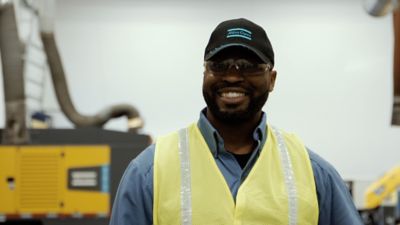10 steps in the lithium battery production process
EV battery production for electric cars
From electrode manufacturing to cell assembly and finishing.
1. Material mixing
Making a slurry is the first step of battery production. Materials are measured, added, and mixed.
Active materials are combined with binder, solvent, conductive additives, etc. Like a flour kneading machine, the planetary ball mill mixes the active materials. To make sure the mixed active material particles stick together well, we need a material that can hold them together.
Binders are added to improve adhesion between the particles of electrode active materials. It must have stable properties that could maintain good adhesion when in contact with electrolytes or during redox reactions at electrodes.
2. Coating and drying
The coating process uses a coater (a coating machine) to coat aluminum and copper foils with the cathode and anode slurry layers, respectively. It is an important step that determines many cell design parameters like uniform performance and longer battery life.
In order to prevent damage to aluminum and copper current collectors (or foils) when coating the electrodes, controlling the roll-to-roll machine and coating electrodes evenly and uniformly are critical.
After coating, these wet layers still need to be dried thoroughly before being ready for the next phase. This process of drying by heating or vacuum takes up to 48% of the entire battery manufacturing process.
3. Pressing
The roller pressing phase compacts the dry and coated electrode sheet again in order to increase the energy density of the battery. Appropriate compacted density can increase battery capacity, reduce internal resistance, reduce loss of polarization, and extend battery cycle life.
The flatness of the electrode sheet after calendaring will directly affect the processing effect of the slitting process. The evenness of the active material on the electrode sheet will also affect the performance of the battery cell.
4. Slitting and notching
The electrode flattened in the pressing process is still a hundred(s) meters long.
- In the slitting phase, the battery electrode is cut to the right battery size. The two-phase process includes first cutting the electrode vertically (slitting) and then making a V-shaped notch and tabs to form positive and negative terminals (notching).
- In notching, uncoated parts where cathode and anode active materials are not applied are cut out using notching devices, leaving the corners where tabs will be grounded.
5. Stacking and winding
In the assembly process, the method of stacking the plates and the order of injecting and sealing the electrolyte are all different depending on the shape of the battery.
The method of stacking the plates: Stacking(pouching), Winding(Cylindrical).
- The winding method is similar to how roll tissue paper is made. It has the advantage that the process speed is fast, just like you can quickly wind toilet paper around a paper roll.
- On the other hand, the stacking method is a method of stacking battery cells one by one. It requires higher technology than the winding method but has the advantage of being less warped between cells and increasing the energy density without empty spaces in the battery cells.
6 & 7. Filling and formation
Pouch: When battery ingredients made through lamination and stacking methods are put into the electrode pocket, the electrolyte is injected into the air pocket reaching pores in the electrode pocket. This process creates gas in the air pocket, which is removed later through degassing.
Cylindrical: A vacuum state is created inside of the can and the required amount of electrolyte is injected into it through a nozzle. The can is pressed to let the electrolyte fill the pores of the electrode. When this process is over, the last process is to crimp the top cap and the can.
8. Aging and charging
The batteries are stored at room temperature so that the electrolyte injected during the assembly process can permeate well into the positive and negative electrodes of the battery. The electrolyte is evenly distributed inside the battery to ensure smooth movement of ions between the anode and cathode.
At the same time, the batteries are continuously charged and discharged to create a stable battery, and is the perfect quality control method.
The process of storing batteries at a certain temperature and humidity and charging and discharging is called aging.
9. Degassing
During aging and charging, gas is generated inside the battery. The gas is removed through the degassing process. After degassing - Aging and charging are repeated two more times to test the charging capacity and select defective batteries.
10. Pack assembly
This is the process of taking the individually manufactured battery cells and putting them into modularizing packs before final delivery to the vehicle manufacturers.



